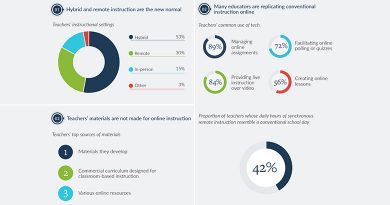Two years of coronavirus: how pandemic unfolded around the world
In December 2019 the WHO was told of a cluster of pneumonia cases in Wuhan, China. These charts show how Covid-19 has spread across the world since then.
Two years ago today, as New Year’s Eve fireworks lit up skies across the world, news reached the World Health Organization (WHO) about an outbreak of “pneumonia” in Wuhan, China, the cause of which was unknown.
There had been several cases in December and possibly as far back as November in the region. But the subsequent WHO announcement was the first time that the world at large was made aware of its existence.
At first the announcement garnered little public attention: like the fireworks that had preceded the announcement, fears of potential diseases usually just flared then faded. But as it turned out the disease that came to be known as Covid-19 was something entirely different.
In the two years that followed, more than 5 million people worldwide have lost their lives to the virus; “lockdown” has become part of the world’s common vocabulary and governments and their citizens are still waiting for a “new normal” to emerge.
The virus has also exposed inequalities within countries in terms of the impact on lower-paid, public-facing employees, as well as exacerbating global inequities as vaccine rollouts take place at vastly different rates.
This global retrospective shows, in graphics, the varying impact of Covid worldwide.
Europe and Americas have had the highest caseloads
More than one in 10 people in Europe and America have tested positive for Covid at this stage in the pandemic, according to figures from Our World in Data that run to 20 December. And even this is likely an underestimate, given that case figures do not capture cases that have gone under the testing radar.
Recorded cases rely on the number of Covid-19 tests carried out in a country. Still, we can get a sense of how the pandemic has spread – and how case rates have expanded and retracted – over the last two years by looking at case rates on continents.
The highly infectious Omicron variant has caused cases to surge in Europe in December, meaning the continent currently counts for 60% of all new cases being recorded worldwide.
This wasn’t always the case, however. As the west reaped vaccine dividends to coincide with the northern summer, South America’s case rates soared for several months, starting in April 2021. This was partly driven by consistently high case rates in Brazil, which have had an effect on the continent’s numbers throughout the pandemic.
North America had the highest case rates at the end of 2020 as Trump’s presidency came to a turbulent end. The country recently reported it had surpassed 800,000 deaths, the highest absolute figure reported anywhere worldwide.
While Africa’s recorded cases seem low, the continent has still been hit hard throughout the pandemic, most recently with the Omicron variant which was first reported in South Africa. Case rates are influenced by how much testing a country does, which in turn is influenced by the funding a country has available to combat Covid-19.
The vaccine rollout gave many countries cause for optimism …
As 2020 drew to a close the world’s hopes were pinned on the vaccine rollout. As of 20 December, close to 8.8bn coronavirus vaccine doses had been administered to 4.5 billion people worldwide, of whom 3.7 billion were fully vaccinated. It provided real-life proof that vaccines reduce the risk of a Covid-19 infection leading to hospitalisation or death.
After signing a deal with Pfizer, Israel was the first major country to achieve strong vaccination coverage. The US and the UK also enjoyed early success in their rollouts, unlike the EU which took longer to pass regulations followed by supply delays.
Many countries have since outpaced the early leaders, among them Portugal, Chile, Cuba, Spain, China, Canada, Ireland, Australia and New Zealand, although another frontrunner, the United Arab Emirates, has managed to fully vaccinate more than 90% of its population.
The latest figures from Our World in Data show that dozens of countries have vaccinated at least two-thirds of the population.
… but the vaccine rollout has been inequitable
While the rollout of over 8bn vaccine dose worldwide is a success, the distribution of these vaccines is unequal.
The latest figures to 20 December show that more than three-quarters of people in high-income countries have received two doses of the vaccine, compared with just 8% of those living in low-income countries.
Data from October revealed how more people have received a Covid booster vaccination in the UK per head of population than are reported to have had their first shot in Africa. Rollout remains stubbornly low in some with dozens of countries – the vast majority in Africa – reporting double vaccination rates of less than 10%.
This doesn’t only affect those countries in which vaccination rates are low: as Omicron has shown, uneven vaccination affords the virus opportunities to adapt and spread through new variants.
Vaccine inequity moved the death burden from richer nations – but winter 2021 shows they’re not out of the woods
As vaccination campaigns started to cover the most vulnerable in wealthy nations, the impact was quick to see. Data from late April revealed a record shift in the burden of global Covid-19 deaths to poor and lower-middle income countries.
However, in the months that followed a combination of a relaxation of restrictions, the emergence of the Delta variant, the northern hemisphere winter and vaccine hesitancy in some wealthier nations (most notably the US) has meant that high-income nations are once again recording high levels of deaths.
As 2021 comes to an end, close to half (47%) of all global deaths are being recorded in high-income countries. This is lower than the 57% recorded last winter, but far higher than the 8% recorded in July 2021 when some in richer nations thought that they had vaccinated themselves out of the pandemic.
These deaths figures, from Our World in Data, are as reported by each country. As countries have different methodologies for counting and reporting a Covid-19 death these numbers need to be interpreted with care.
While large countries such as the US, Brazil and India have recorded the highest overall number of Covid-19 deaths, Peru, Bulgaria and Bosnia and Herzegovina are the countries that have the highest death tolls when population is taken into account. Peru has recorded 6,062 deaths per million people over the course of the pandemic.
Excess deaths figures can provide further clarity when doing international comparisons: this figure is the difference in the number of people who have died in a given time period compared with the average number of deaths that occurred in the same period in the previous years. Our analysis was conducted using the country-level reported deaths from Our World in Data as it provides the most frequent and current picture of what is being reported by each country.
Source: https://www.theguardian.com/world/2021/dec/31/two-years-of-coronavirus-how-pandemic-unfolded-around-the-world?utm_medium=10today.uk.rd.20211231&utm_source=email&utm_content=article&utm_campaign=10fortoday4.0styling




